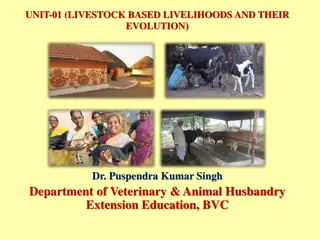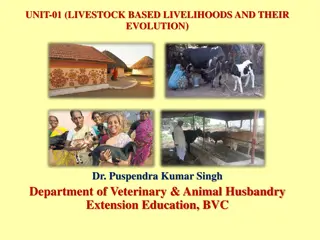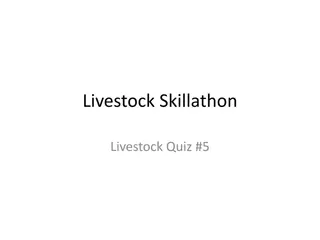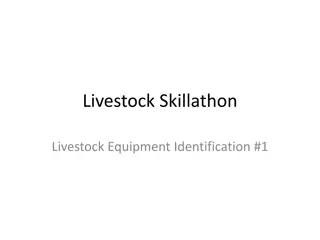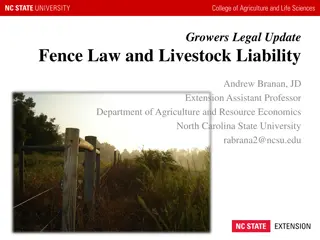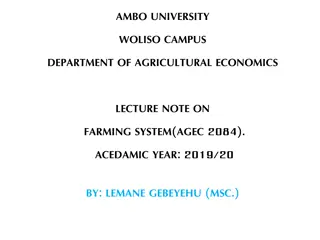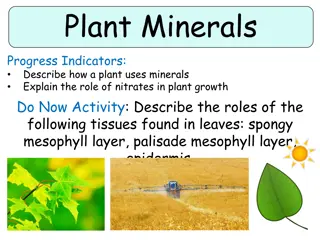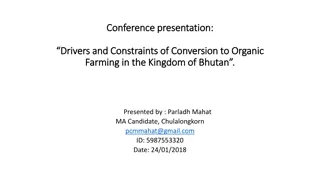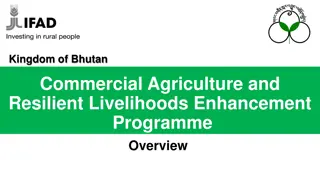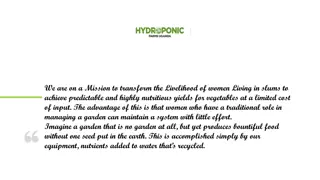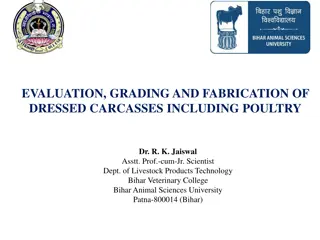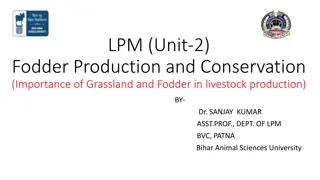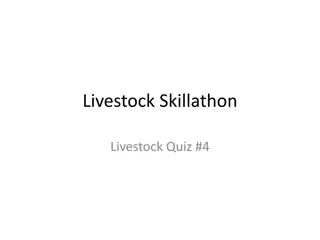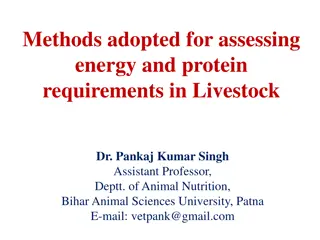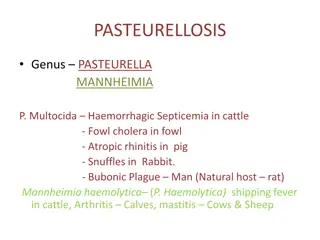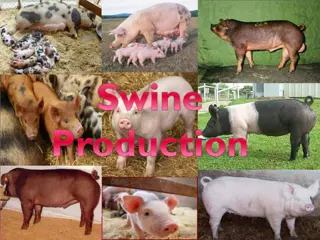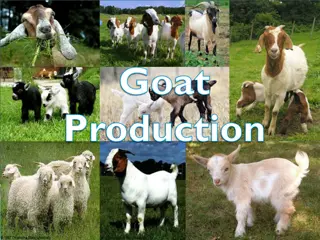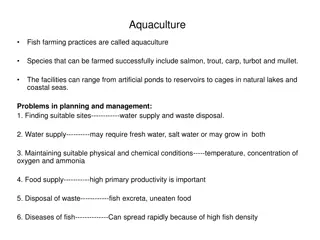Evolution of Livestock-Based Livelihoods in Peasant Farming
Livestock-based livelihoods have evolved significantly in peasant farming, where individual farmers own, manage, and organize their entire farms. Advantages include better supervision, increased employment opportunities, greater productivity, and quick decision-making abilities. However, challenges such as difficulty in adopting improved practices, low marketable surplus, suboptimal resource utilization, and weak commercial motives are also prevalent in this farming model.
Download Presentation

Please find below an Image/Link to download the presentation.
The content on the website is provided AS IS for your information and personal use only. It may not be sold, licensed, or shared on other websites without obtaining consent from the author. Download presentation by click this link. If you encounter any issues during the download, it is possible that the publisher has removed the file from their server.
E N D
Presentation Transcript
UNIT-01 (LIVESTOCK BASED LIVELIHOODS AND THEIR EVOLUTION) Dr. Puspendra Kumar Singh Department of Veterinary & Animal Husbandry Extension Education, BVC
Peasant Farming Most commonly followed form of business in farming in India as well as most of the countries of the world. In peasant farming, the individual farmer is the owner, manager and organizer of the whole farm.
ADVANTAGES OF PEASANT FARMING: (a) Better Supervision: If the size of the farm is small, the owner himself can effectively supervise the work of the labourer and can also guide and direct him to do his job in a particular way. (b) More Employment: In peasant farming there is generally a greater scope for employment on the farm. Firstly, as the farm is small in size, the use of machinery becomes costly and therefore limited. Labour is thus not displaced. Secondly, the farmer use the labour of his own family and treats it as free labour.
(c) Greater Productivity: Productivity per acre on a farm under peasant farming is high. The main reason for this is the greater intensity of cropping which, in turn, is due to greater use of labour per acre on small farms when compared with that on a larger farm. d) Possibility of Quick Decision: Frequent weather and climate changes necessitate immediate decisions on the part of a farmer. Such decisions are more easy to take when the owner himself controls the farm and more easy to implement when he himself is the operator of the farm and when the size of farm is rather small.
DISADVANTAGES OF PEASANT FARMING (a) Difficulty in Using Improved Practices and Improved Inputs: Transformation of agriculture is more difficult when the farms are small in size. (b) Low Marketable Surplus: Production of a small farm is sufficient to meet the domestic need of the farmer only. (c) No Optimum Use of Available Resources: (d) Weak Commercial Motive: The small farmers are generally off the market. He neither purchase any input from the market, nor sell any surplus in market. They thus remain uninfluenced by the changes in the market forces


